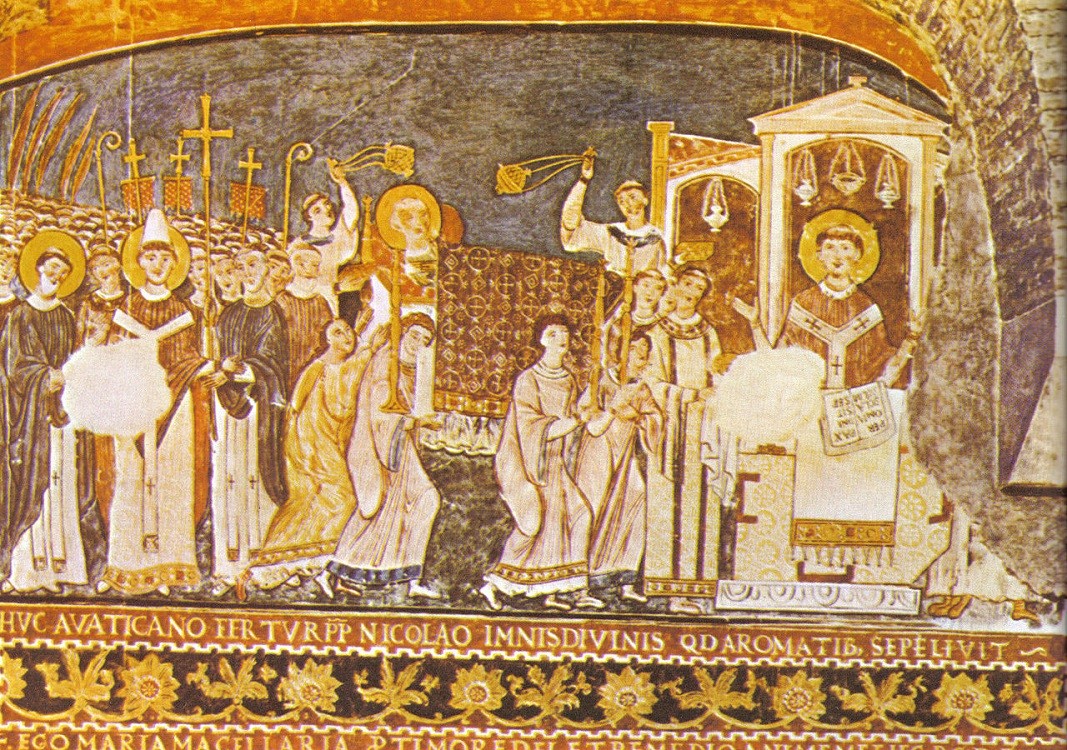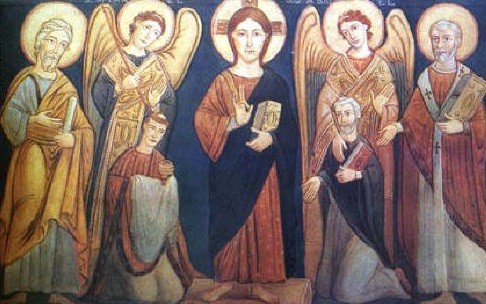Every tree has roots. The bigger the tree, the deeper its roots. We are all united here in Southeast Europe. It is our saints that unite us, not divide us. This was stated in an interview with Radio Bulgaria by Prof. Konstantinos Nichoritis. A graduate of the Athonias Ecclesiastical Academy in Greece, he also holds a BA in Theology from Sofia University in Bulgaria. He is a professor at the Faculty of Slavic, Balkan and Oriental Studies at the University of Macedonia in Thessaloniki and a foreign member of the Bulgarian Academy of Sciences.
Our conversation revolves around the work of Saints Cyril and Methodius, brothers from Thessaloniki who created the Slavic and Old Bulgarian alphabets. We ask why, given that the earliest biographies of these saints state that they were Greek, the Bulgarians began revising these accounts in the 11th century to claim that the Slavic enlighteners were 'Bulgarians by birth'.

Professor Nichoritis recounts that the brothers served in the foreign department of the Holy Synod of Constantinople during the time of Patriarch Photius. Before bringing the Slavic alphabet to Great Moravia, they undertook other missions among the Arabs and Khazars. Following their missions in Great Moravia* and among the Western Slavs, they were canonised relatively soon after their deaths. St Cyril died in Rome in 869, and St Methodius passed away in Velehrad, the capital of Great Moravia, in 885. Their disciples wrote the first biographies and liturgical services for the two saints.

'They were written in Bulgaria, on Bulgarian soil. During the early period, while the disciples who were direct witnesses were still alive, the liturgical tradition remained as it had been brought and originally written in Bulgaria. This explains why old, extensive hagiographies and services refer to Moravia, Pannonia and the Western Slavs. However, in Bulgaria, the population was Bulgarian and it was not fitting for them to say that their enlighteners had created the Slavic alphabet for the Moravians. 'corrected', with all references to Moravia and the Western Slavs removed or replaced with references to Bulgaria. Such is the case with the 'Breviary Life' of St Cyril, titled 'The Dormition of Cyril', in which the biographer states that Cyril was Bulgarian by origin and baptised the Slavs along the Bregalnica River. There are other brief hagiographic accounts of the life of St Cyril which mention that he preached in Bulgaria, but this is not true, explains Prof Nikhoritis.

To this day, the reason why St Cyril and St Methodius created such strange iconography for the Glagolitic alphabet remains a matter of debate. What was their purpose? And how and why was it replaced in Bulgaria by the so-called Cyrillic alphabet?
'There are various opinions and views. Moravian Prince Rostislav wanted an alphabet that was neither Latin nor Greek, as only Latin was taught at the time," explains our interlocutor. 'When the disciples came to Bulgaria, especially those who settled in Preslav — including Constantine of Preslav — they introduced the Cyrillic alphabet.'
The researcher emphasises specifically that the creation of the Slavic alphabet was commissioned by the Patriarch of Constantinople, Photius, long before Saints Cyril and Methodius were sent on a missionary journey to Great Moravia. The aim was for the Byzantine Empire to convert its Slavic subjects living in the Balkans and scattered throughout Asia Minor to Christianity. These Slavs spoke a Bulgarian dialect. This is why the alphabet and translations created by Saints Cyril and Methodius at the Polychron monastery in the Olympus mountains of Asia Minor were based on Bulgarian. This is why, when they were brought to Bulgaria by the disciples of the holy brothers, they were easily accepted.

'In these Slavic-Bulgarian settlements that had relocated to Asia Minor, the language spoken was Old Bulgarian. The evidence for this lies in the diphthongs and consonant clusters. These features are unique to the spoken dialect used there and were adopted by the Western Slavs in the Moravian-Pannonian lands. The texts carried the distinctive linguistic characteristics of Old Bulgarian. Nevertheless, the tradition established among the Western Slavs is tied to the Moravian period. When they arrived in Bulgaria, a purely Bulgarian period began. The creation of the Cyrillic alphabet was entirely Bulgarian, in the Old Bulgarian language. From there, it began to spread to the Eastern Slavs in Russia and westward to Serbia via Mount Athos, in my view."
This is according to a Greek scholar teaching in Thessaloniki, who spoke passionately about the linguistic, philosophical and cultural legacy left to us by the two enlightening brothers from Thessaloniki.
Edited by D. Semkovska
Published and translated by E. Radkova
Photos: Pravoslavieto.com, the Bulgarian School 'Sts. Cyril and Methodius' in Valladolid, Facebook/ Konstantinos Nichoritis, Veneta Pavlova, archiveDuring a visit by the Radio Bulgaria team to the Bulgarian Orthodox Parish "Nativity of the Mother of God" in Geneva, we had the pleasure of meeting Ventseslav Sabev, the son of long-time church history professor at the Sofia Theological Seminary,..
On November 15, 1910, Russian pilot Boris Maslenikov carried out the first airplane flight in Bulgaria. He took off in a Farman-type aircraft from an improvised airfield near Sofia. In the days that followed, several more demonstration flights were..
On 16 April 1879, the deputies of the Constituent Assembly debated, approved and signed Bulgaria’s first constitution, the Tarnovo Constitution. This document established the legal basis for the establishment of the new Bulgarian state following the..

+359 2 9336 661
